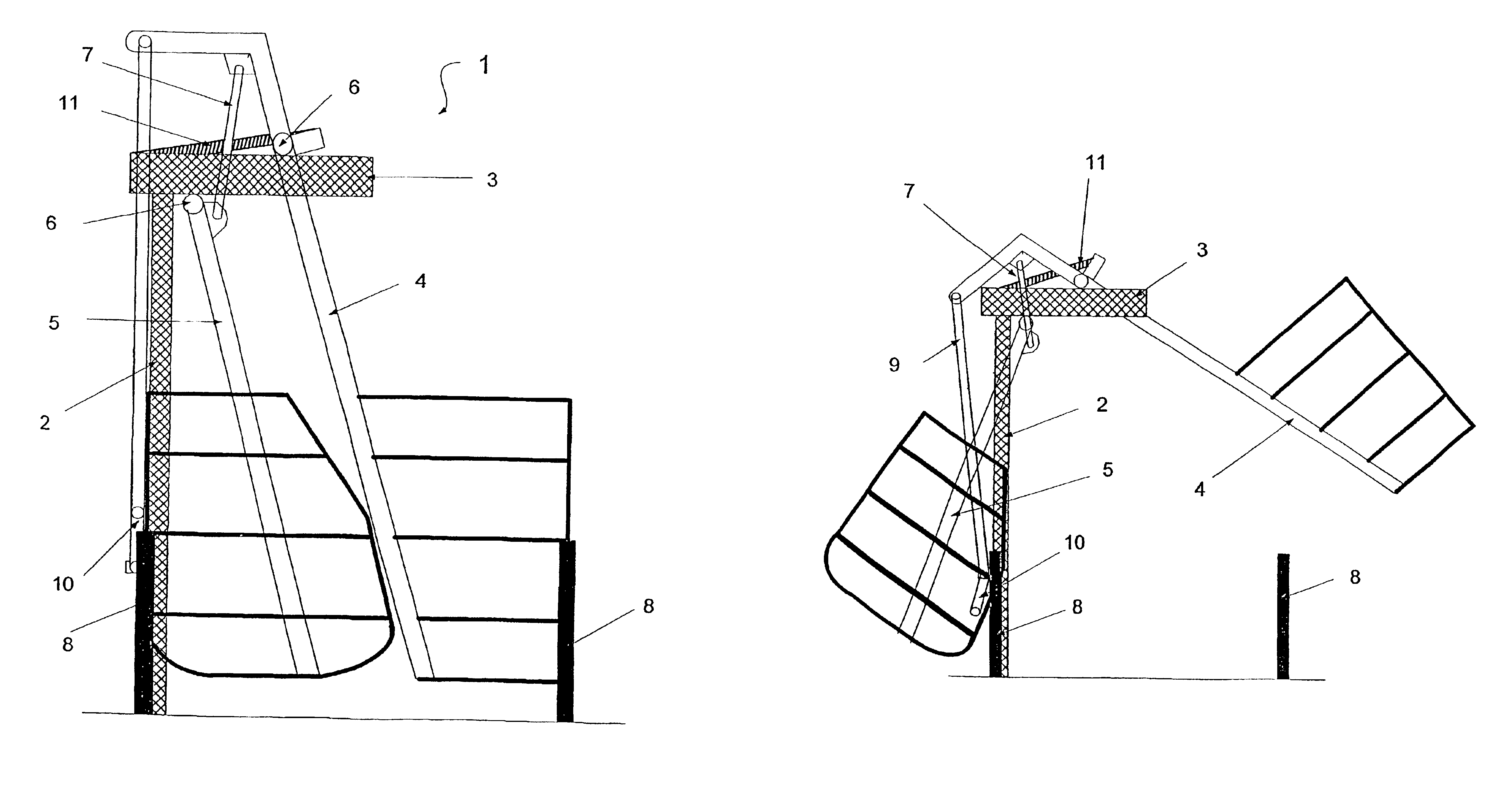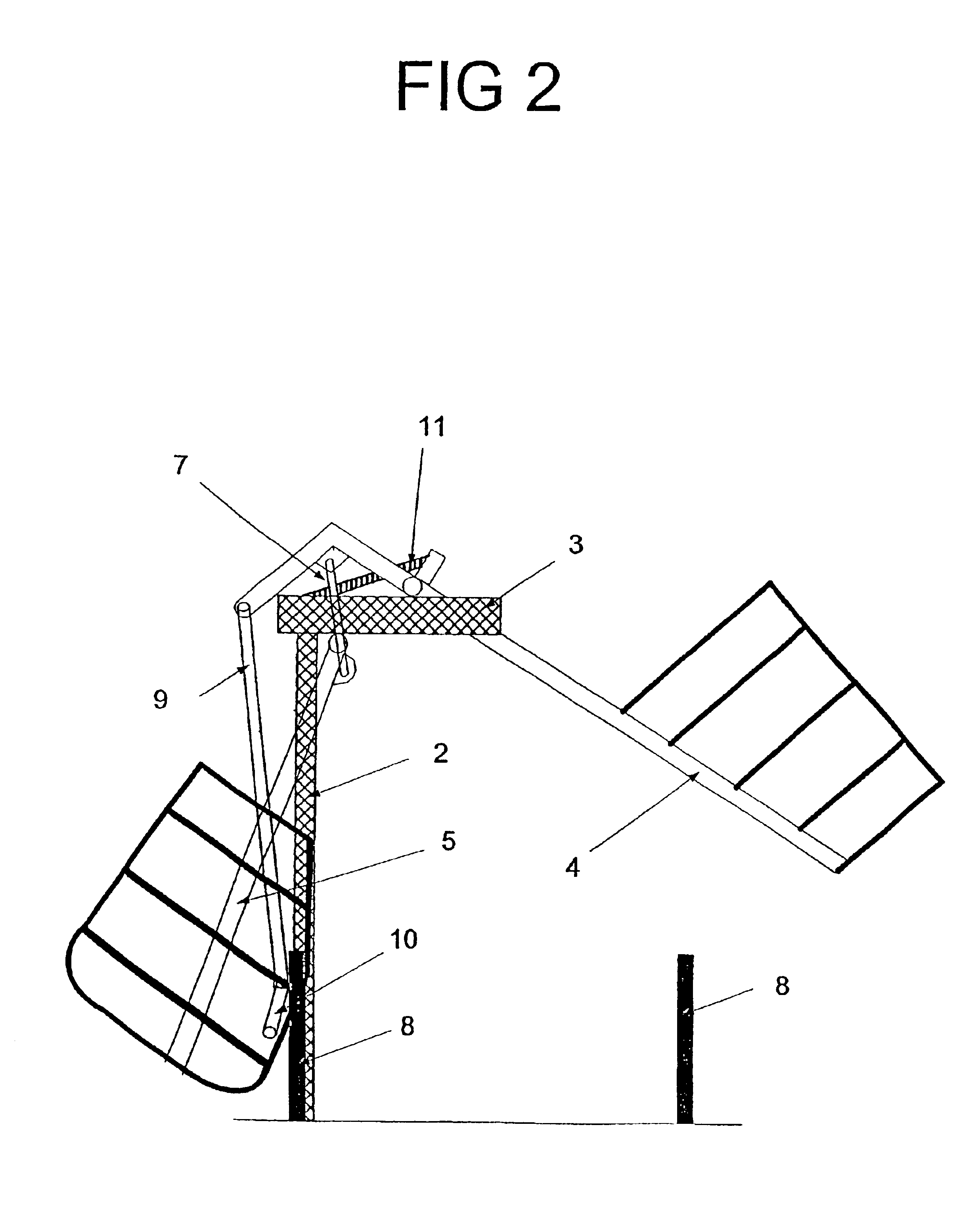Gate
a technology for gates and doors, applied in the field of gates, can solve the problems of restricting the size of the building in which the gate assembly is installed, affecting the operation of the gate, and being particularly hazardous to the operator, so as to achieve less maintenance, less room in the open position, and less complicated
- Summary
- Abstract
- Description
- Claims
- Application Information
AI Technical Summary
Benefits of technology
Problems solved by technology
Method used
Image
Examples
Embodiment Construction
With respect to the figures, there is illustrated a preferred embodiment of the present invention generally indicated by arrow 1.
The gate assembly 1 includes a support stanchion 2 to which the box section cage 3 is mounted.
The outer gate 4 and inner gate 5 are mounted to the box section cage 3 via pivot 6.
The gates 4, 5, are joined via an adjustable linking rod 7.
The gate assembly 1 can be fitted with a set of restraining struts 8 in order to ensure an animal cannot force the gates 4, 5, forward and thereby damage the gate assembly 1.
The operator controlled gate activation lever 10 is connected to the gates 4, 5, via an adjustable linking rod 9.
The weight of the gates is counterbalanced by a spring 11, which is mounted between the box-section cage 3 and the outer gate 4.
FIG. 2 shows the gate assembly 1 in the open position, highlighting how the inner gate 5 withdraws from the passageway so that its inner edge is level with the support stanchion 2.
The outer gate 4 is raised high enou...
PUM
 Login to View More
Login to View More Abstract
Description
Claims
Application Information
 Login to View More
Login to View More - R&D
- Intellectual Property
- Life Sciences
- Materials
- Tech Scout
- Unparalleled Data Quality
- Higher Quality Content
- 60% Fewer Hallucinations
Browse by: Latest US Patents, China's latest patents, Technical Efficacy Thesaurus, Application Domain, Technology Topic, Popular Technical Reports.
© 2025 PatSnap. All rights reserved.Legal|Privacy policy|Modern Slavery Act Transparency Statement|Sitemap|About US| Contact US: help@patsnap.com



